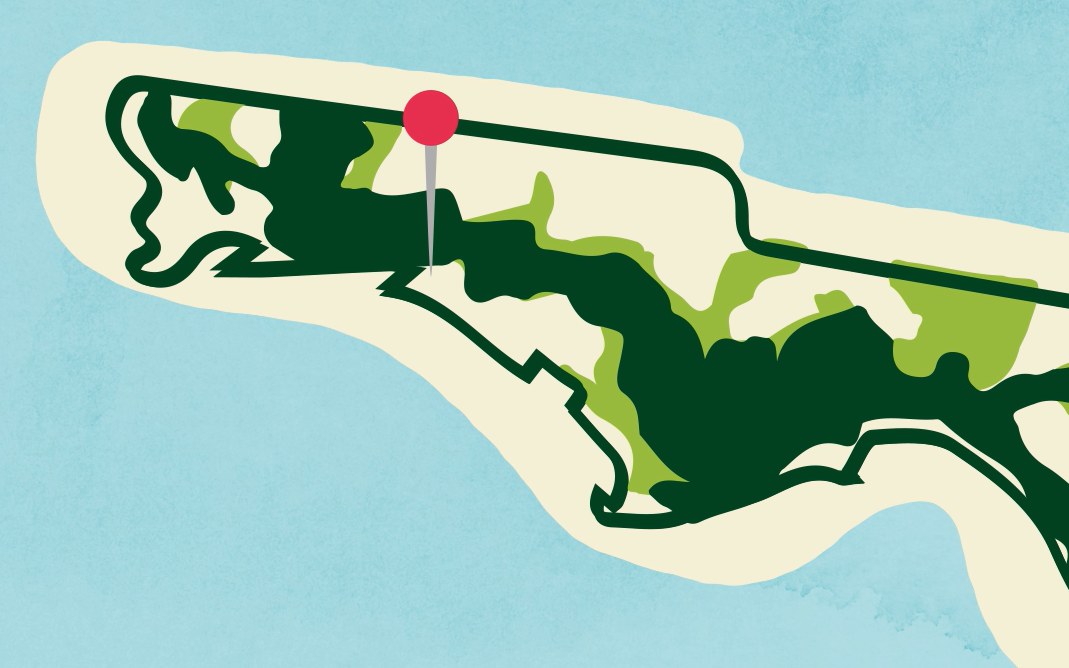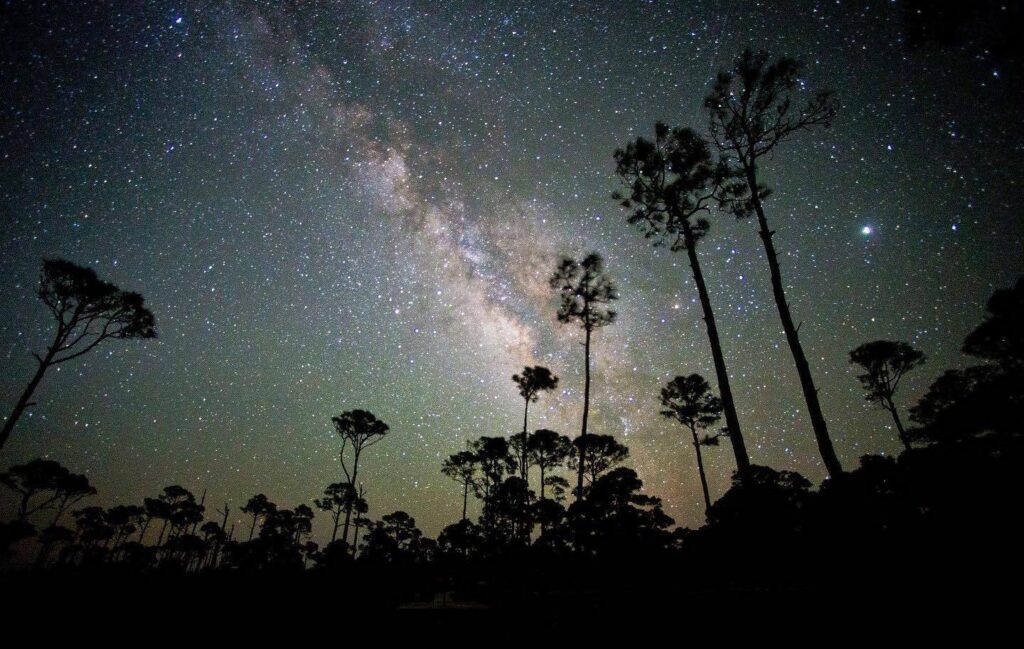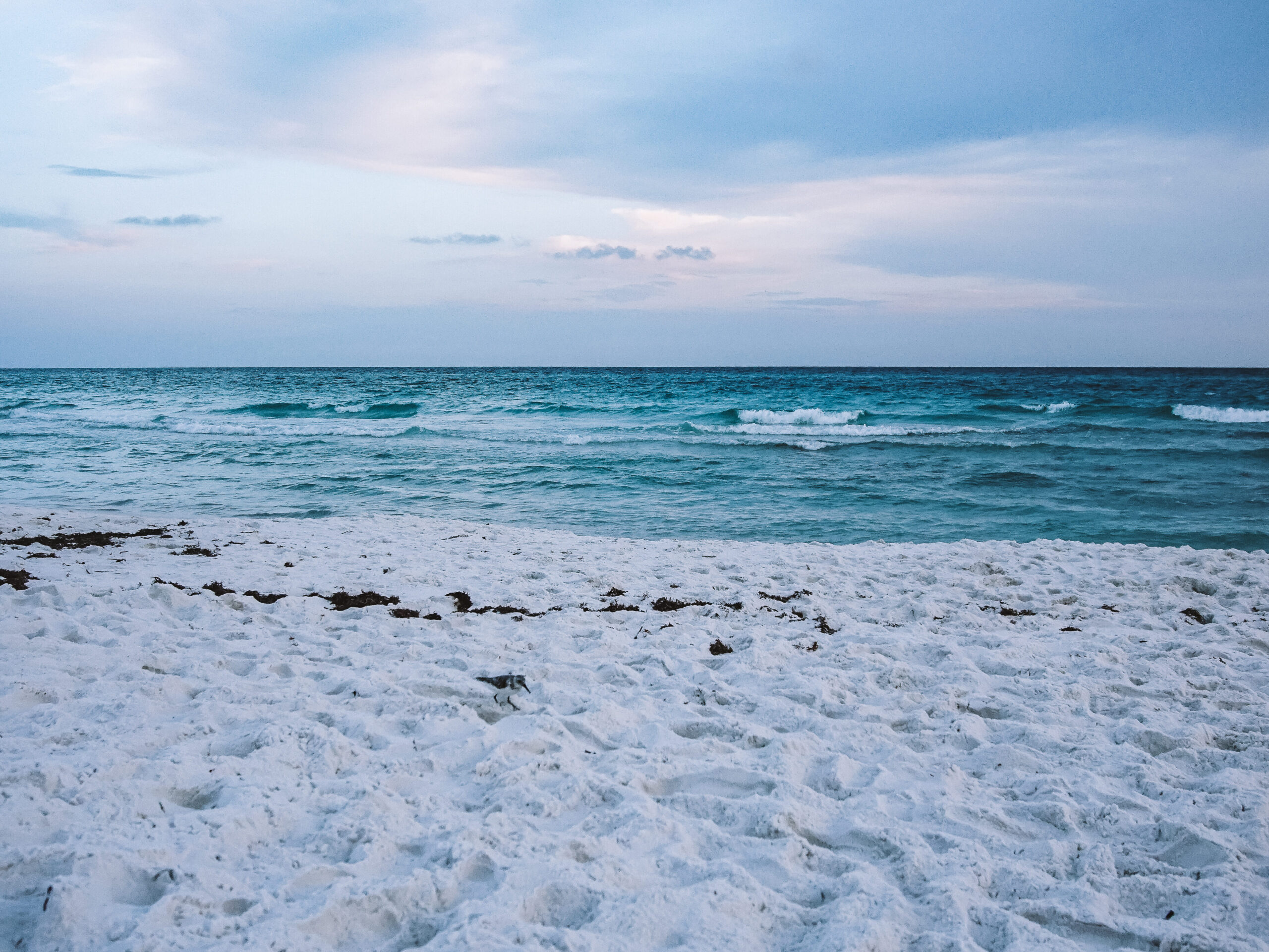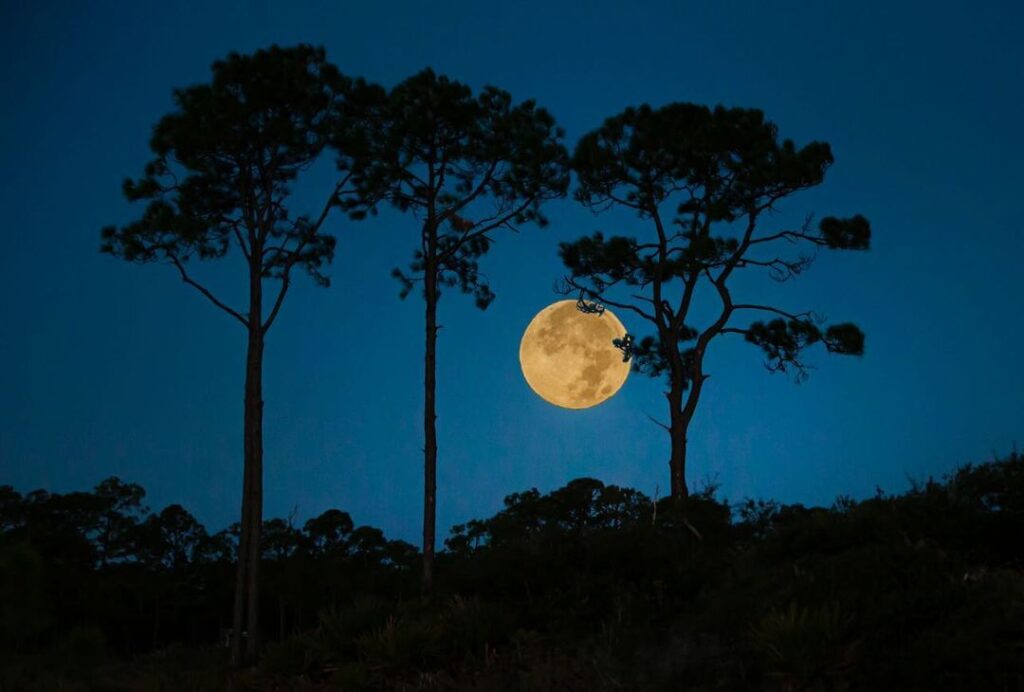Weekend in the Corridor: 30A
From sunbathing to stargazing, here’s how you can Live Wildly in one weekend at 30A!

Baby turtles, haunted forests and rare coastal dune lakes … oh my! We bet you didn’t expect all of this – and more – along 30A, the 20-mile highway between Destin and Panama City, Fla.
While many visit 30A for the chill beach vibes, fresh seafood and local shops, this stretch of coastal cities also borders several spots within the Florida Wildlife Corridor.
The next time you visit, go outside your comfort zone and experience Florida’s wild side. You’ll be amazed by the vast skies, clear waters and unique wildlife existing right here in 30A.
What to Pack:
- Water bottle
- Packed lunch
- Snacks
- Bug spray
- Hat
- Sunglasses
- Sunscreen
- Camera
- Park maps
- Waterproof hiking boots
- Camping gear
- Overnight bag
- Hammock (optional)
- Binoculars or telescope (optional)
Saturday: Tate’s Hell State Forest and Dr. Julian G. Bruce St. George Island State Park
Before venturing into Tate’s Hell State Forest, be warned – legend has it that in 1875, a man named Cebe Tate got lost in the swamp for several days while looking for a predator that killed his livestock. He got bitten by a snake and drank from the tainted waters, living just long enough to say, “My name is Cebe Tate, and I just came from hell” when found days later. Thus, the swampy forest got its name!
Today, swamps still cover nearly half of the 200,000-acre forest. And its unique wet prairies, wildflowers and migratory birds attract frequent visitors – but don’t worry, Tate’s ghost is not one of them.
Begin your weekend early with a hike through the legendary forest. The High Bluff Coastal Hiking Trail traverses through ancient sand dunes covered in scrub plants and offers options to hike the 3.5-mile east loop, 5.5-mile west loop or full 9-mile loop. A drier, quarter-mile hike along the Ralph G. Kendrick Boardwalk leads you through cypress swamp to dwarf bald cypress, which date back 150 years but don’t grow more than 15 feet tall.
Live Wildly Tip: Make sure you download a map of the park ahead of time as cell service can be spotty. It’s also best to avoid hiking after heavy rain, and always wear waterproof hiking boots as parts of the park are wet year-round.
After conquering Tate’s Hell, take a short drive to Dr. Julian G. Bruce St. George Island State Park, a quiet oasis that’s regularly ranked as one of the best beaches in America. It’s a 20-mile-long barrier island tucked between the Gulf of Mexico and Apalachicola Bay. Swim or relax at the unpaved beach and look for unique shells, turtles digging their nests or dolphins playing in the surf. The park features 2,023 acres of different habitats and ecosystems and nearly 300 bird species, such as sandpipers and snowy plovers. You can also rent kayaks and canoes at the ranger station to paddle along the Gulf or bay.
Live Wildly Tip: For dinner, stop by the Blue Parrot Ocean Front Café, a funky and colorful Tiki bar and restaurant that serves seafood and tropical cocktails.

Want to see some spectacular stargazing to end your adventure day? Set up camp at one of the 60 campsites, located just a quarter mile from the beach in a pine flatwood forest behind historic dunes (hammock camping is allowed, too!). With the closest metro area in the Gulf Coast nearly 70 miles away, the island provides a 180-degree, light pollution-free view. Head to the observation deck for a dazzling display of the white and purple flashes of the Milky Way, glowing stars and if you’re lucky – Jupiter and Saturn.
Sunday: Grayton Beach State Park

After the wild adventure yesterday, we planned something more low-key for day two. Start by enjoying a slow morning of coffee and pastries at Black Bear Bread Co. After breakfast, take a short walk to Grayton Beach State Park, a soulful and free-spirited part of 30A. The parking lot entrance leads you under scrub oak until you emerge onto the emerald-green Gulf Coast waters and powdery white snow sands of Grayton Beach. As your feet squeak against the soft sand, you’ll feel transported to a tropical island.
Live Wildly Fact: Frequently voted the No. 1 beach in America, Grayton Beach is one of the oldest communities in 30A, attracting vacationers from Florida and Alabama for more than 100 years. Its unofficial slogan is: “Nice Dogs, Strange People.”
Spend your day sunbathing or rent a paddleboard, kayak or canoe and explore the calm waters of Western Lake, a 100-acre coastal dune lake.
Live Wildly Fact: Coastal dune lakes are extremely rare. They only exist in Madagascar, Australia, New Zealand, Oregon and the Panhandle (three of which are at Grayton Beach!). They occur when a freshwater lake sits just a few feet away from the salty ocean. After heavy rains, the lake will sometimes overflow into the ocean, creating a flow of brackish water.
The park also includes a 4.5-mile loop trail along coastal forests and a 1-mile nature trail through a dune ecosystem, salt marsh and pine flatwoods. Rest at one of the picnic pavilions at the beach day-use area or Western Lake boat area and watch the sunset on the waters.
Live Wildly Tip: Before heading home, check out Growler Garage – a brewery decked out in surf boards and motorcycles that serves 40 different craft beers – or The Red Bar – a local favorite decorated with red lights and artwork, with a simple menu of seafood (including the BEST crabcakes) and cocktails, plus live jazz band almost every night!

We hope you enjoyed your weekend exploring the Corridor at 30A. Do you have other favorite Corridor spots? Let us know on social using #LiveWildlyFL so we can share your finds!

